TAKEUCHI Miho
An exhibition of the two masters from the world of shoujo manga (girls’ manga), YAMATO Waki + YAMAGISHI Ryoko Exhibition of Two Sapporo Artists, featuring their respective masterpieces Asaki yumemishi (The Tale of Genji) and Hi izuru tokoro no tenshi (Emperor of the Land of the Rising Sun), was held from Saturday, March 9 to Sunday, March 24, 2024. It took place in Higashi 1-chome Theater, a venue in Sapporo City where the two artists have deep ties. Showcasing valuable original drawings of their representative works, the exhibition attracted many visitors from across the country.
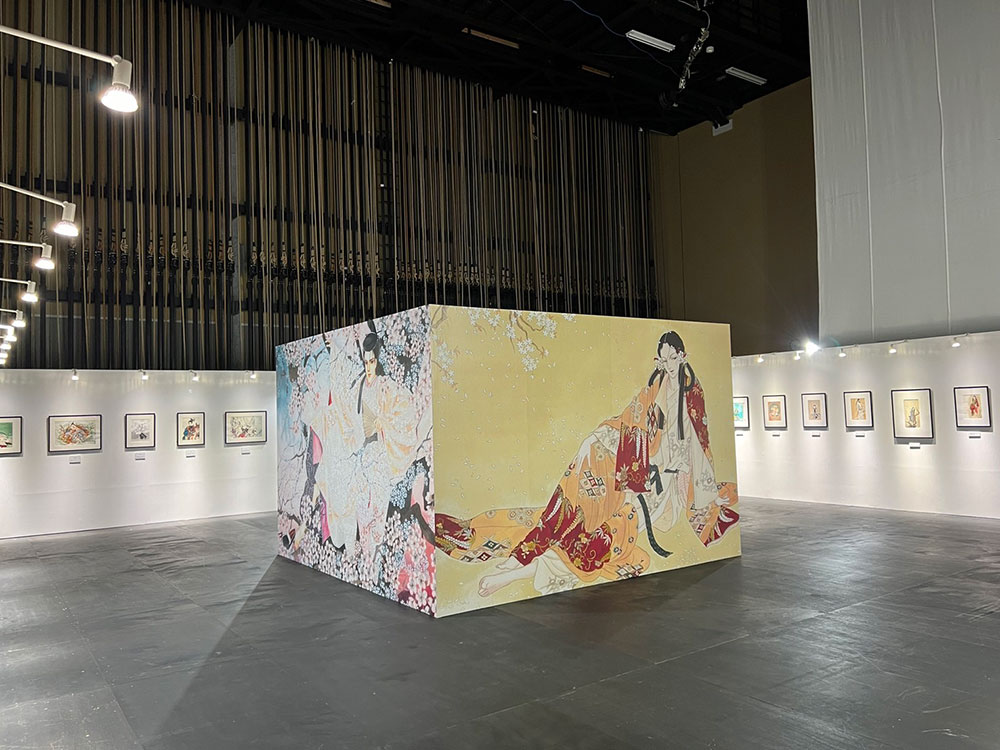
The first thing to note is that, unlike typical manga exhibitions, this exhibition was organized by the local government of Sapporo, not a manga museum or a production committee. Sapporo City is currently working on the “Initiative to Promote Urban Development Using Pop Culture Such as Manga” and has already conducted “Feasibility Study on the Development of Libraries, Museums, and Businesses Centered on Books (Manga).”1 The study concluded that it is necessary to investigate the expectations of citizens and tourists through prototyping, such as holding exhibitions and setting up mini-libraries, and to foster momentum. Thus, the Shiroi Yokai Park Exhibition also took place in fiscal 2023,2 and the Hokkaido to manga no mirai (Hokkaido and the Future of Manga) exhibition was held by the Sapporo Municipal Central Library as a collaborative project within the city government.3 The titled exhibition is part of the trend in Sapporo City’s urban development policies to utilize pop culture.
But why these two? Hosting two-person exhibitions by manga artists from different publishing companies is generally challenging. Behind the realization is the Hokkaido Manga Museum Initiative led by YAMATO Waki as the representative and YAMAGISHI Ryoko as the vice-representative. The group, supported by manga artists from Hokkaido, advocates the cultural value of manga and its potential as a tourist resource. They have been lobbying the city of Sapporo since around 2021. As the city proceeded with its project, such activities became one of the drivers for realizing this unique two-person exhibition in Sapporo, as one of the events aimed at investigating the citizen’s interests in manga and its economic impact.
Considering how the artists themselves handpicked the original artworks to exhibit (83 monochrome and 45 colored pieces of original artworks), it is a significant exhibition with a greater commitment from the artists compared to general manga exhibitions.
The exhibition consists of three simple sections: “Two Artists from Sapporo,” “Monochrome Original Artworks,” and “Colored Original Artworks.” The simple configuration and layout focus the viewers’ attention on the original artworks, highlighting the power of both works. Furthermore, while it revolves around the original drawings, the exhibition also makes viewers aware of the two’s connection to Sapporo.
According to KAJITA Shinobu, the art director, the exhibition configuration aimed to “make visitors feel the significance of the exhibition taking place in Sapporo and the power of manga as a medium directly through the original artworks.”
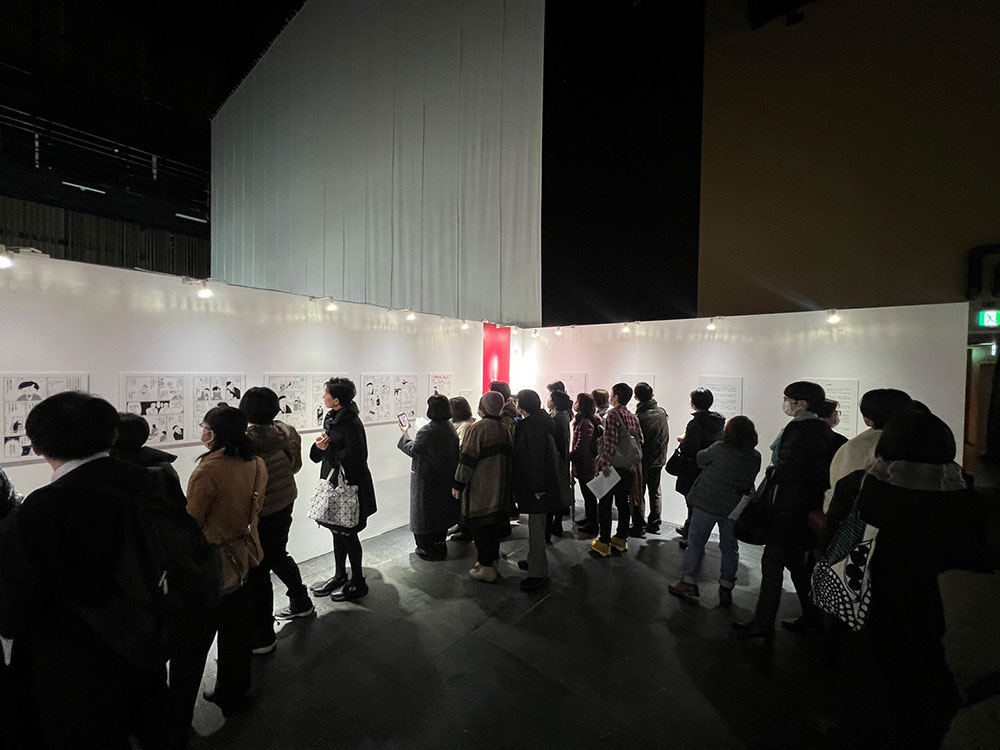
This section introduced the manga artists’ profiles and two works set in Sapporo, where they first met. In YAMAGISHI’s contribution to Tezuka sensei to no omoide (Memories with Mr. TEZUKA) (published in Tezuka Osamu bunkasho 20 shunen kinen MOOK; manga no DNA—manga no kamisama no ishi wo tsugu monotachi [Tezuka Osamu Cultural Award 20th Anniversary Commemorative MOOK; DNA of Manga—Successors to the God of Manga], Asahi Shimbun Publications Inc., 2016), she describes the time TEZUKA Osamu, the object of idolization among aspiring manga artists, visited the Sapporo Snow Festival in February 1965, when the two were high school students. The article recounts a heartwarming story in which they approached TEZUKA directly and had him read their manuscripts, giving a glimpse into the relationship the two artists have had since then.
It is followed by Odori koen de kodomo shiteta koro (When I was a child in Odori Park)” (published in Tenshi no kajitsu 1 [Fruit of Angels 1], Kodansha, 1993) by YAMATO Waki, in which she looks back on her memories when she was in elementary school, playing in Odori Park near her home in Sapporo. The story depicts her childhood playing games unique to Hokkaido in the park before its development.
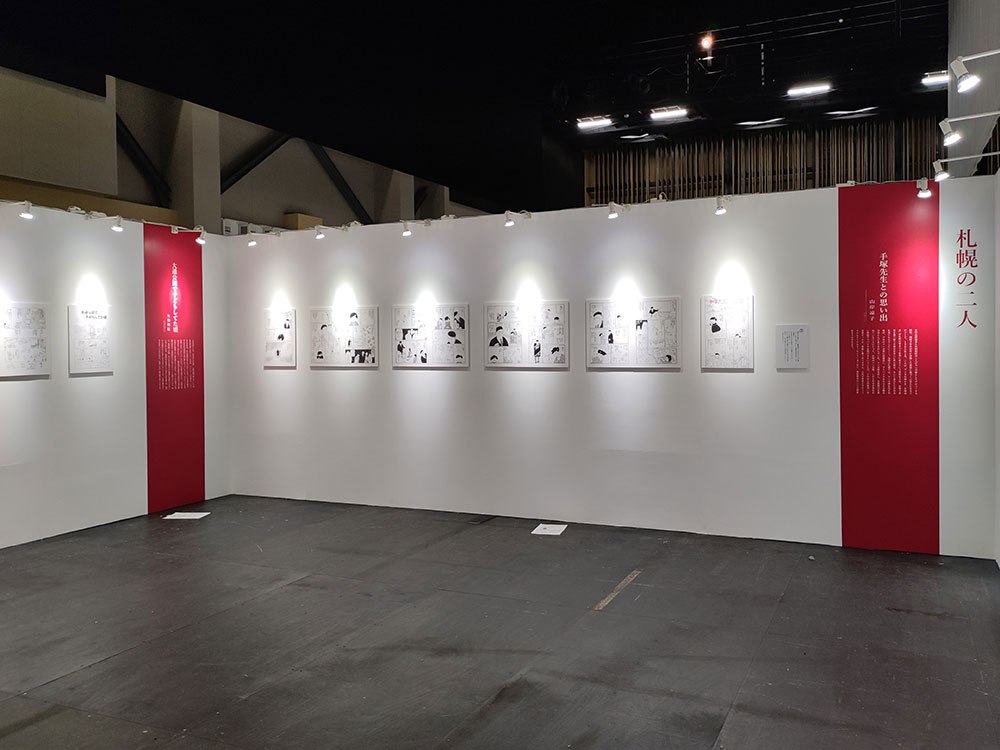
In the corridor leading to the “Monochrome Original Artworks” section, memorable places for the two are mapped out along with their anecdotes, titled “Memories of Sapporo and Hokkaido.” Fans are greeted with valuable testimonials, such as the coffee shop run by YAMATO’s parents and the ballet school YAMAGISHI attended, displayed alongside photos of Sapporo at the time.
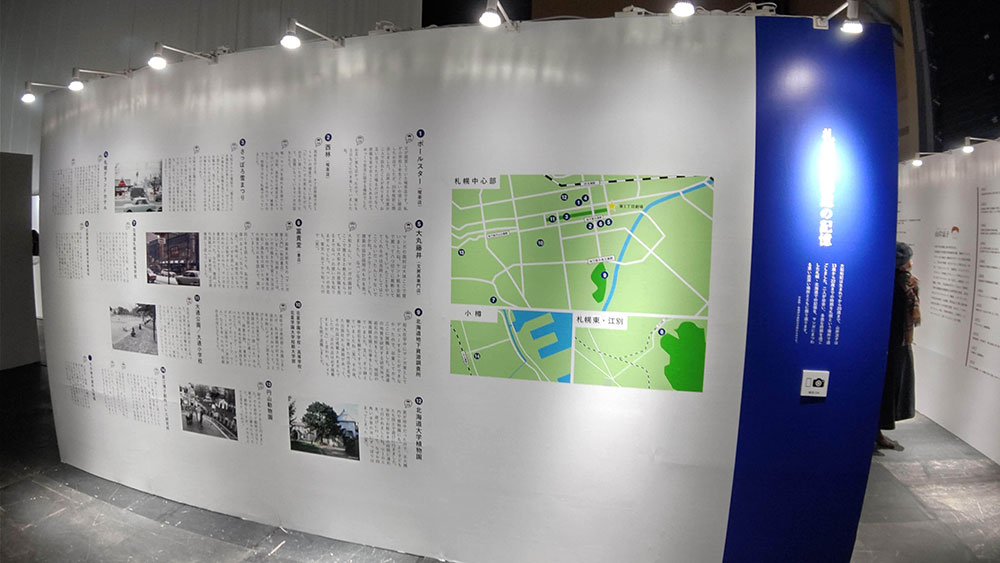
The “Monochrome Original Artworks” section is divided into two equally sized spaces, showing the two artists’ representative works, Asaki yumemishi and Hi izuru tokoro no tenshi, on specially designed artwork display stands. The original drawings are sandwiched between acrylic panels, allowing visitors to see them up close, immersing themselves in the intricately detailed world of manga.
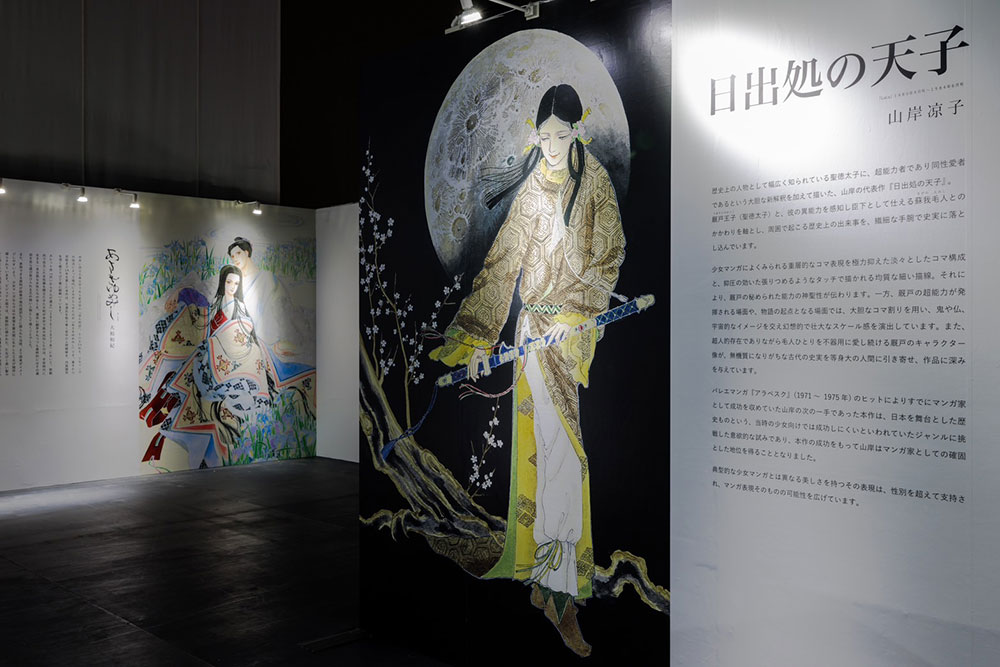
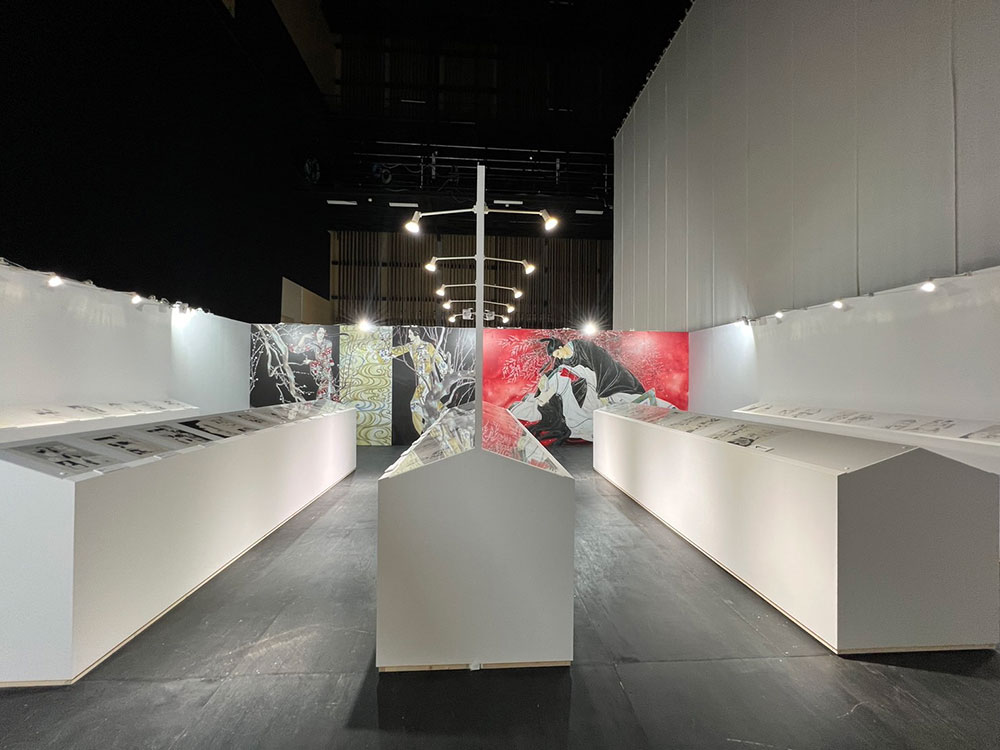
The selection of drawings and the comments added reveal interesting differences between the two artists. For Asaki yumemishi, a continuous scene corresponding to New Herbs I from Murasaki Shikibu’s Genji Monogatari (The Tale of Genji) is exhibited. YAMATO’s comment is displayed at the beginning of the section, explaining the reason for the selections and its highlights.
For Hi izuru tokoro no tenshi, YAMAGISHI handpicked the original drawings from climactic scenes, adding comments under each page.
Many of the comments were written specifically for the exhibition. As they also mention memories from the production, they provide a glimpse into the creative process.
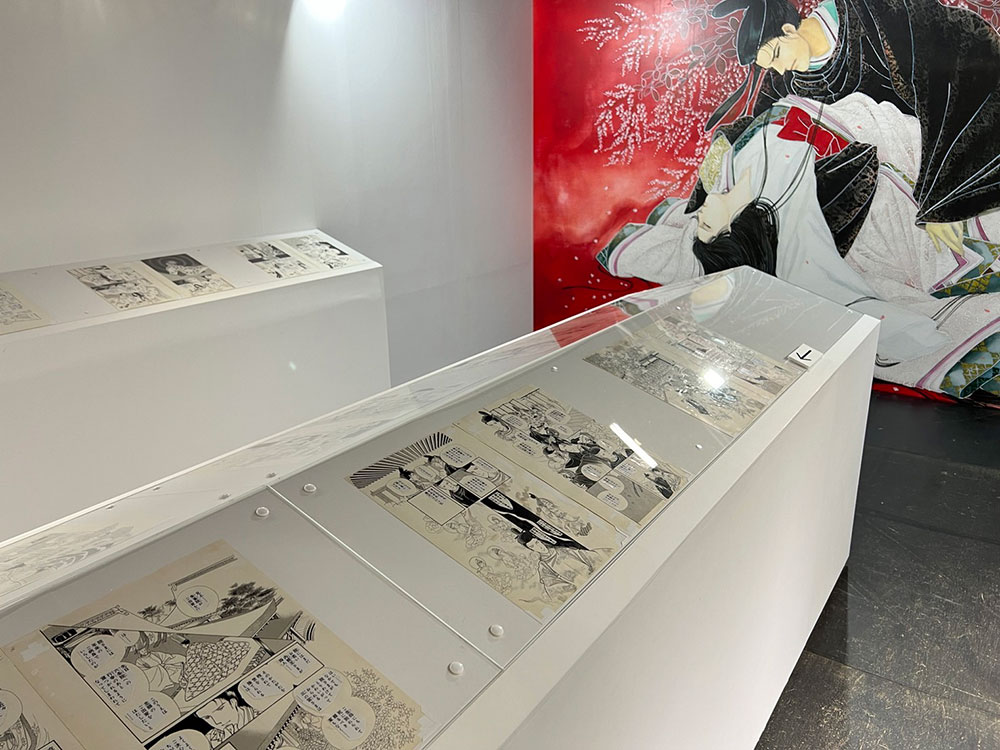
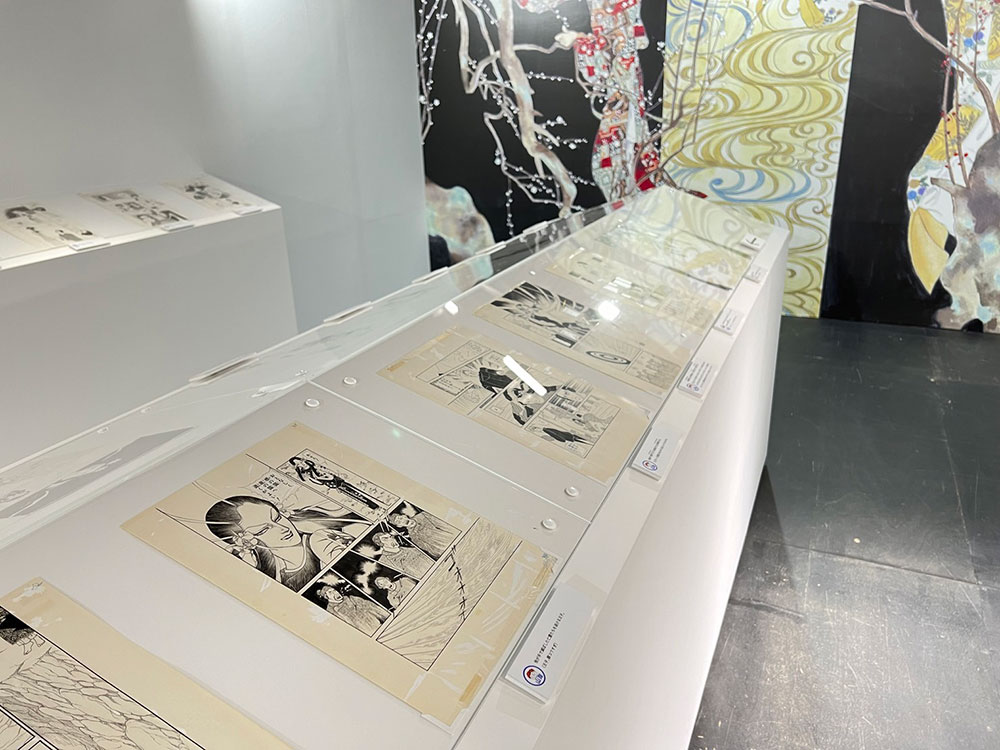
In the corridor connecting the exhibition halls for the monochrome and colored original artworks, four works each by YAMATO and YAMAGISHI are featured, titled “Introduction of Representative Works.” In addition to the three well-known works, one work set in Sapporo, Hokkaido, was selected for each artist.
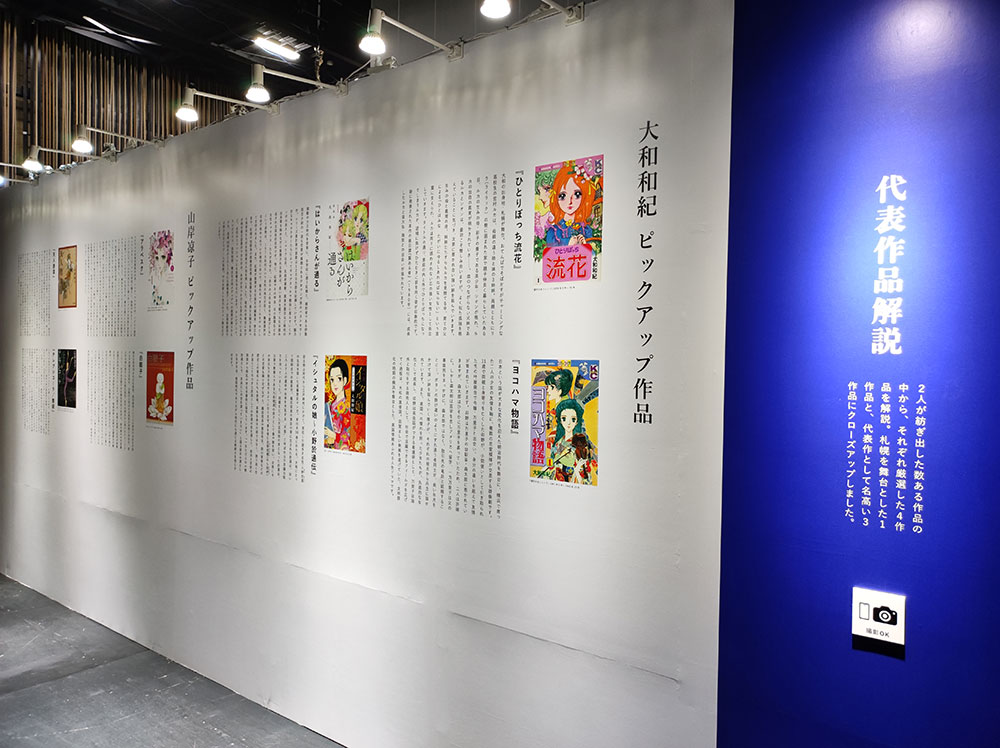
The section dedicated to colored originals has a cube-shaped wall in the center, dividing the space diagonally while displaying the original drawings from the two manga on the walls. Each colored original is individually framed, vividly conveying the meticulous hand-drawn techniques, such as the intricate patterns of the kimonos, the shading, and the fineness of lines, which cannot be replicated through printing.
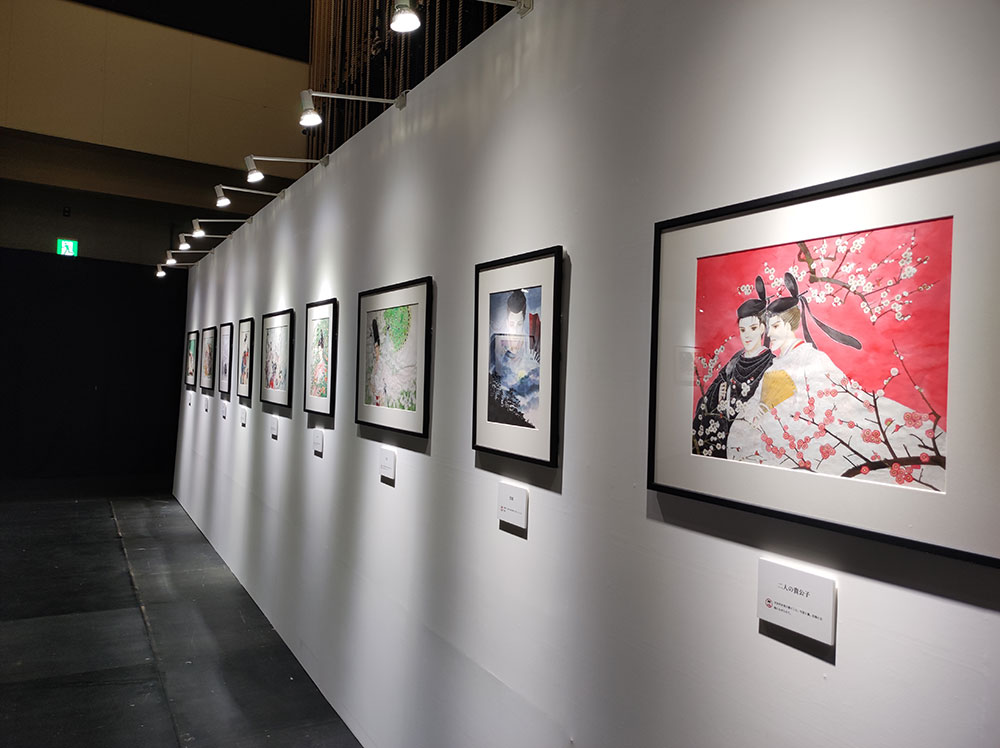
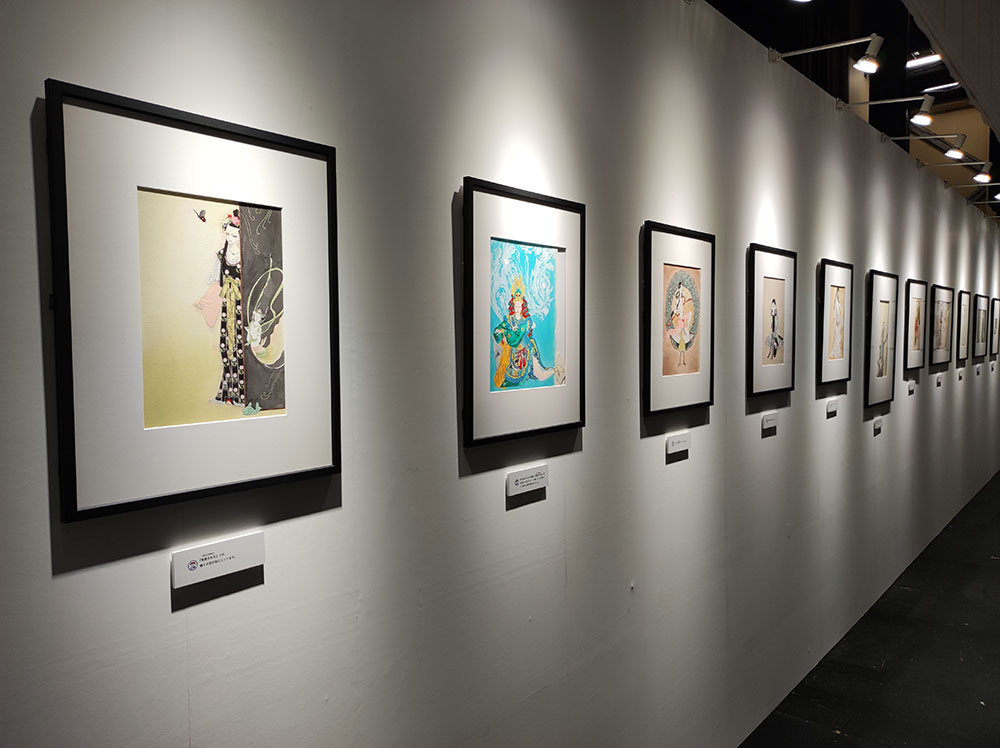
Exiting from the paid zone with original drawings, one walks into the admission-free zone that can be entered without a ticket. It is named the “Library Corner,” in which visitors can browse not only Asaki yumemishi and Hi izuru tokoro no tenshi but also other works by both artists. There is also a corner where visitors can write feedback on the exhibition and their opinions on the “Map of Manga Artists from Hokkaido” and the “Hokkaido Manga Museum Initiative.” Seeing posters handwritten by YAMATO and YAMAGISHI, visitors could be seen writing their passionate thoughts.
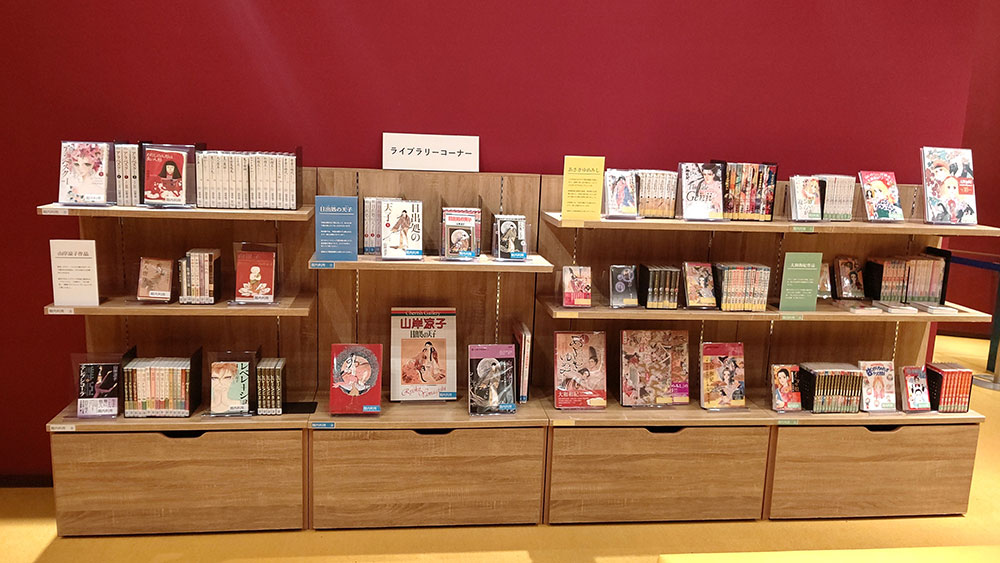
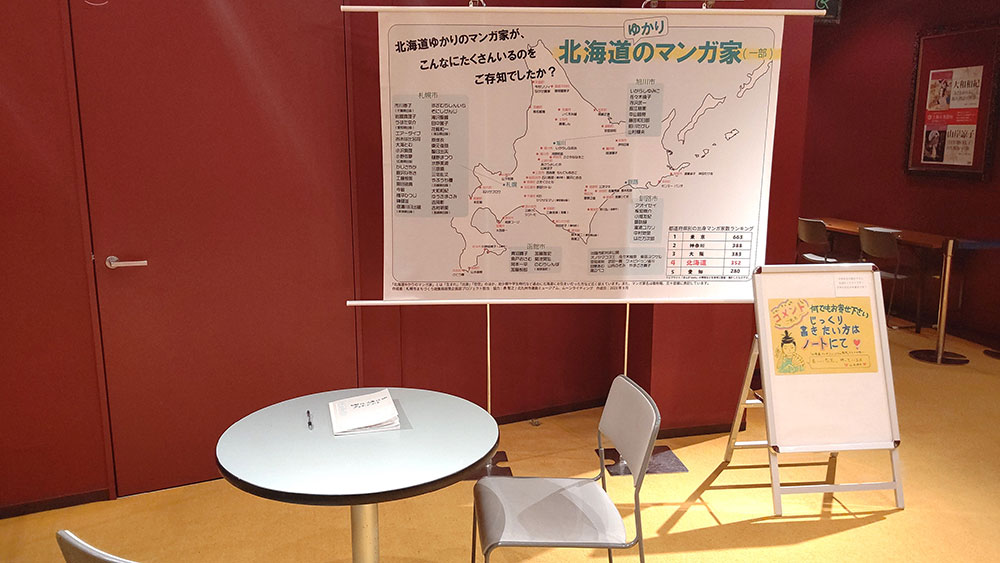

Furthermore, a lot of original merchandise is sold exclusively at the venue. Just before the end of the exhibition, almost everything, including related books, had sold out, indicating the continuing popularity of both works.
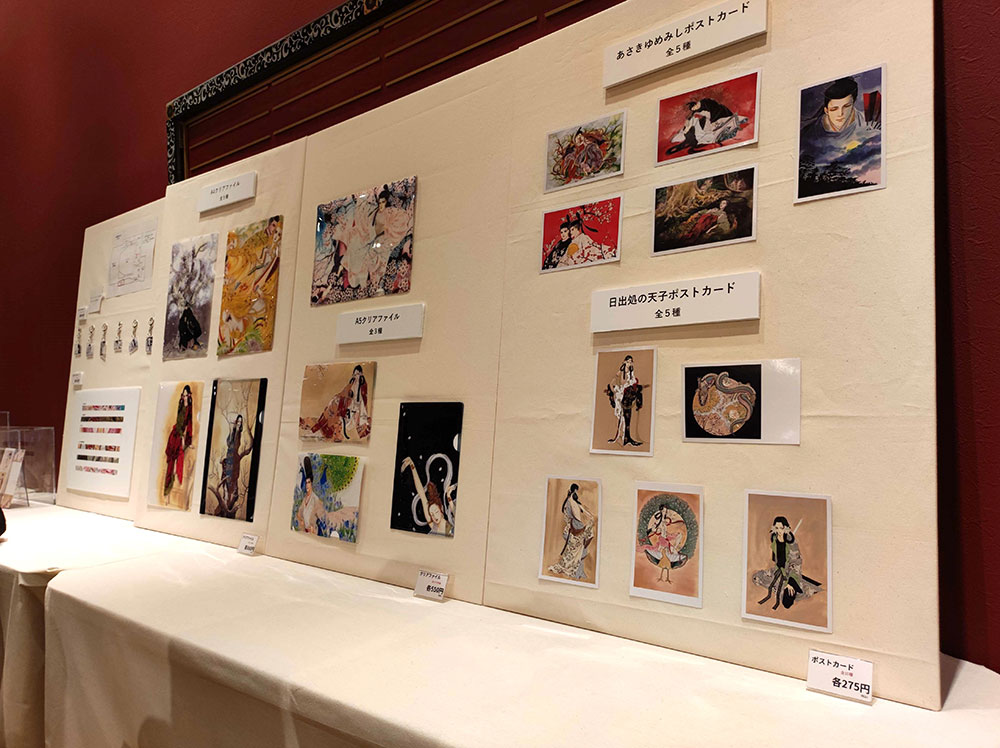
On the opening day, Saturday, March 9, a talk event was held by YAMATO and YAMAGISHI, with YAMADA Tomoko (Yoshihiro Yonezawa Memorial Library of Manga and Subcultures, Meiji University) as the coordinator. The hall was filled to its approximately 900-seat capacity, where the audience was entertained by their comments on each other’s works, memories from their high school days, the differences in their perspectives, and other funny anecdotes.
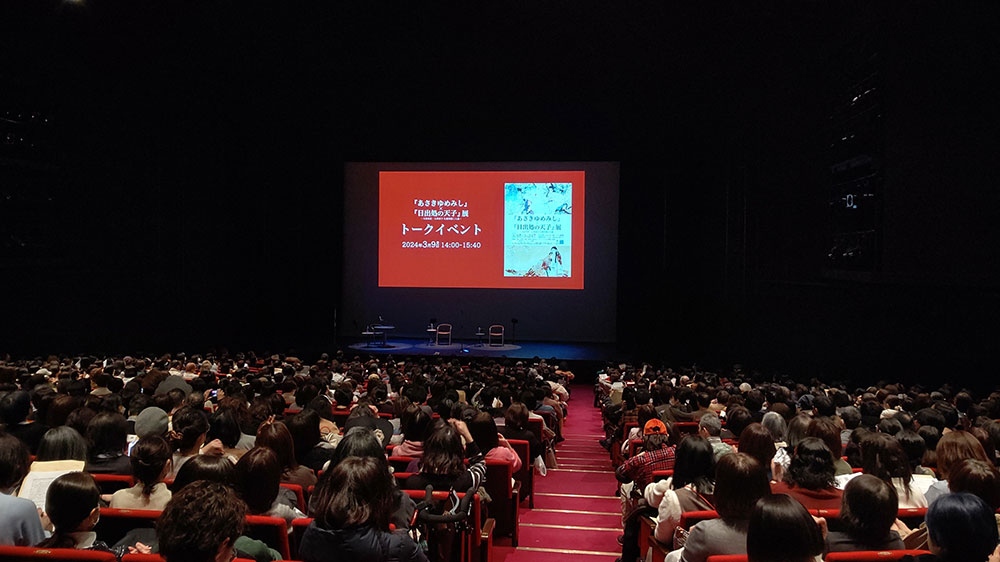
As this is a special exhibition organized by Sapporo City, there are no plans for it to travel. After its opening, it became a hot topic on online news and social media. Many visitors from outside Hokkaido also rushed to the exhibition, recording over 8,000 visitors in the period of just about two weeks. The high level of interest in the exhibition and the satisfaction of visitors are reflected in the large number of repeat visitors and the board of guests’ messages. There are also high expectations for the “Hokkaido Manga Museum” that the two artists strive to establish.
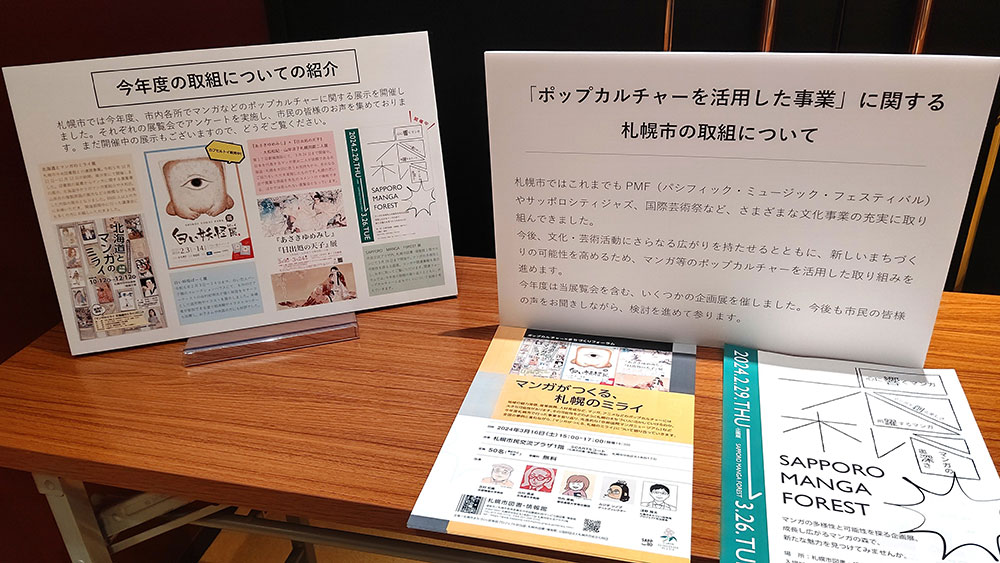
As a side note, on Saturday, March 16, during the exhibition period, the Sapporo City government held a forum entitled “Sapporo’s Future Created by Manga.”4 At this forum, ASANO Takao, the Director of Projects from Urban Development Policy Bureau (responsible for initiatives through pop culture); YOSHIMURA Kazuma (professor at Kyoto Seika University); YAMAMURA Takayoshi (professor at Hokkaido University); KAJITA Shinobu (art director); and I took to the stage to report on Sapporo City’s initiatives to date and discuss pop culture and urban development, including examples from other regions such as the Kyoto International Manga Museum. The forum also welcomed a large number of visitors. We witnessed a high level of interest among citizens towards urban development through manga.
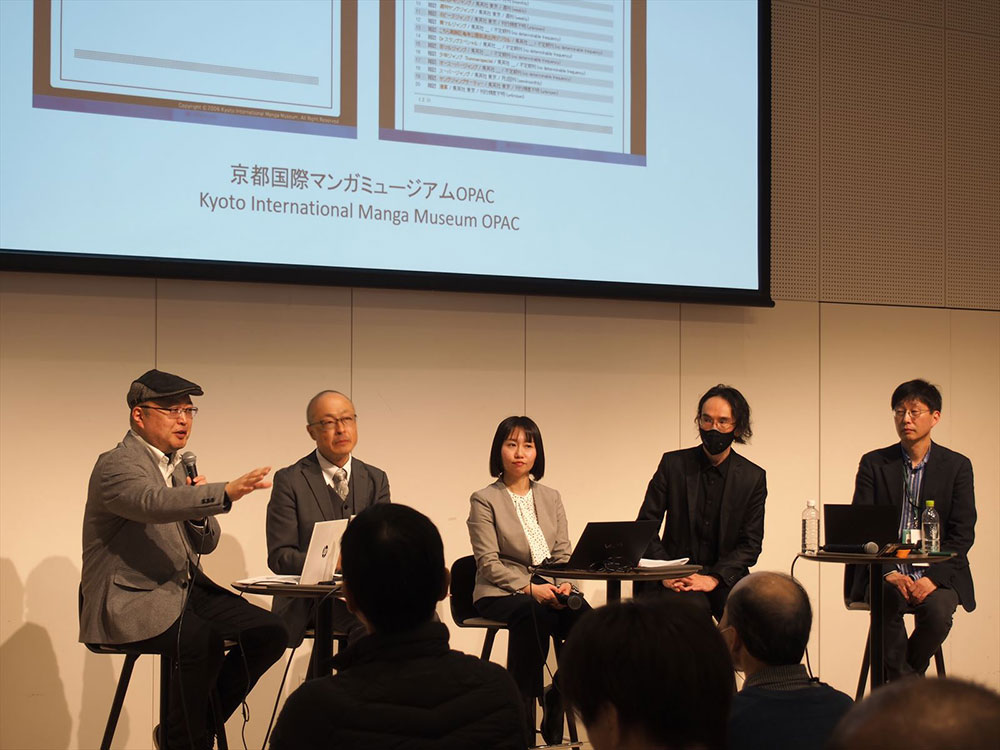
Hokkaido has produced many manga artists and is the setting for many manga titles. How will manga-related efforts bear fruit here? There is no doubt that the success of this exhibition has greatly advanced the initiative’s future. We must keep an eye on its future developments.
notes
information
Asaki Yumemishi × Hi Izuru Tokoro no Tenshi
―YAMATO Waki + YAMAGISHI Ryoko Exhibition of Two Sapporo Artists
Date: Saturday, March 9–Sunday, March 24, 2024
Venue: Higashi 1-chome Theater (1-10 Odori-Higashi, Chuo-ku, Sapporo-shi, Hokkaido)
Admission: Adults 1,500 yen, University and high school students 1,000 yen, Ticket including talk event 2,500 yen
https://www.city.sapporo.jp/kikaku/shomu/popculture/asakiyumemisi-hiidurutokoro.html (in Japanese)
*URL links were confirmed on July 26, 2024.